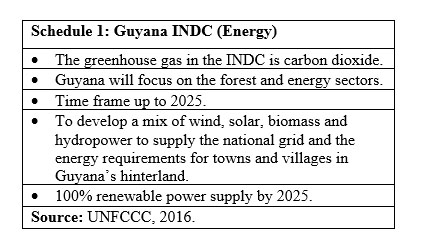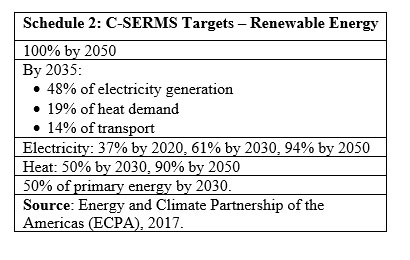As indicated earlier in this series, Part 2 of Guyana’s Petroleum Road Map is dedicated to detailing the guidelines for the Government of Guyana (GoG) spending its projected petroleum revenues. My introductory column to Part 2 of the Road Map, introduced earlier in the year (June 30, 2019), had further indicated that this will be the Final Guidepost. In sum, it focuses on two “foundational spending recommendations”, which arise from the endeavour to construct a Petroleum Road Map that seeks to offer guidance to the GoG, as well as the broad mass of Guyanese, whose petroleum wealth is under consideration.
I had previously described these recommendations as, on the one hand, the development of Guyana’s renewable energy resources. I had predicted Guyana’s renewable resources constitute, potentially, as much wealth to promote the country’s development as our increasingly obvious petroleum resources endowment. And, on the other, to provide cash transfers to households (now known as the Buxton Proposal). These transfers, as we shall see, are designed to promote broad based, equitable, and sustainable development for all Guyanese. They focus specifically on the effective removal/alleviation of income poverty as a fundamental barrier to Guyana’s development.
Going forward, my intention is to start with item 1, renewable energy, and then turn to the elaboration of the Buxton Proposal. That action will bring my series of Sunday columns, on Guyana’s extractive sector, generally, and its coming petroleum sector, specifically, to a close. The larger effort commenced in September 2016; and the Petroleum Road Map in January 2019.
I had also claimed in that earlier column (June 30 this year): “Both these investments (renewable energy and the Buxton Proposal), represent, strategically, the most effective/best economic/ developmental way for spending Guyana’s Government Take. Indeed, I shall further argue that, they provide “a transformational outcome for Guyana’s economy”, which I believe, is the ultimate goal of the Road Map.
Two Up-front Observations
Two up-front observations are warranted at this juncture. First, to recall, last week’s column had recommended the development of natural gas as a preferred route, when compared to a State-owned refinery, for pursuing value added development, to Guyana’s crude oil production and export. In this regard I had referred to the State’s request for advice from Energy Narrative (a network of Caribbean energy experts). Here, three options had been identified for natural gas usage as energy. These are: 1) electricity generation/co-generation; 2) alumina processing of Guyana’s bauxite; and 3) development of “industrial parks” offering “cheap” energy.
The second up-front observation is that the inclusive, environmentally sustainable development path of the Guyana Green State Development Strategy (GGSDS) (discussed earlier) stands in direct contradiction (in both letter and spirit) to the carbon-based led prodigious GDP economic growth which is anticipated for Guyana. I say “letter and spirit” because Guyana has unequivocally committed also to the 2015-2030 United Nations Sustainable Development Goals (UNSDGs), which have replaced the 2000-2015 Millennium Development Goals.
Under the United Nations rubric, Guyana’s authorities have solemnly committed the country to both the global goals embodied in the United Nations Framework Convention on Climate Change (UNFCCC), through its Intended Nationally Determined Contributions (INDC) 2016, and the regional goals embodied in the Caricom Sustainable Energy Roadmap and Strategy (C-SERMS). Both goals explicitly target energy development, centred on the national generation of agreed renewable energy targets over fixed timelines.
Information on the revised 2016 INDCs provided under the UNFCCC is displayed in Schedule 1.
 Guyana’s commitments under C-SERMS are reproduced separately in Schedule 2. Both sets of these commitments reflect, as well as inform, the need for dramatic changes in the roles of renewable energy in the global economy and Guyana.
Guyana’s commitments under C-SERMS are reproduced separately in Schedule 2. Both sets of these commitments reflect, as well as inform, the need for dramatic changes in the roles of renewable energy in the global economy and Guyana.
 Renewable Energy: Global Context
Renewable Energy: Global Context
At this stage it would be useful to draw attention to the situation of renewable energy worldwide.
The most recent available data reveal that worldwide total primary energy supply (TPES), is about 14,000 Million Tonnes of Oil Equivalent (Mtoe). About 13 to 14% of this comes from renewable sources. Solid biofuels/charcoal remain the largest source in developing countries (nearly two-thirds), followed by hydro power. The remainder is mainly geothermal, liquid biofuels, biogases, solar, wind and tidal. Over the past three decades renewable energy growth has been 2.0% per annum, which is higher than the overall global average annual rate of growth of TPES.
Currently, renewable energy sources are the third largest contributor to global electricity supply; accounting for more than one-fifth of world electricity generation. Coal (39%) and gas (23%) hold, respectively, the number 1 and 2 positions.
In global electricity generation today, hydropower clearly dominates, (supplying over 70%) of the world renewable supplied electricity. Biofuels (solid and liquid) plus waste play marginal roles (combined only 1.9% of world electricity). Geothermal, solar, wind and tidal are growing rapidly but account for less than 5% of world electricity supply, but more than one-fifth of the renewable supply. Over the past three decades electricity generation from renewable sources has grown on average by 3.6% per annum. The result is that, while about three decades ago (1990) a little less than one-fifth of global electricity (19.4%) was from renewable sources, by the mid-2010s this had reached 23%.
My recommendation, therefore, blends with progressive global trends.
Conclusion
Next week, I continue to advance the discussion on renewable energy, and seek to elaborate further on my recommendation.






